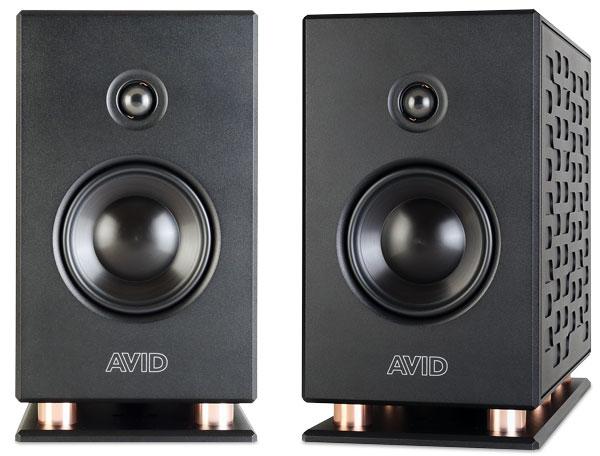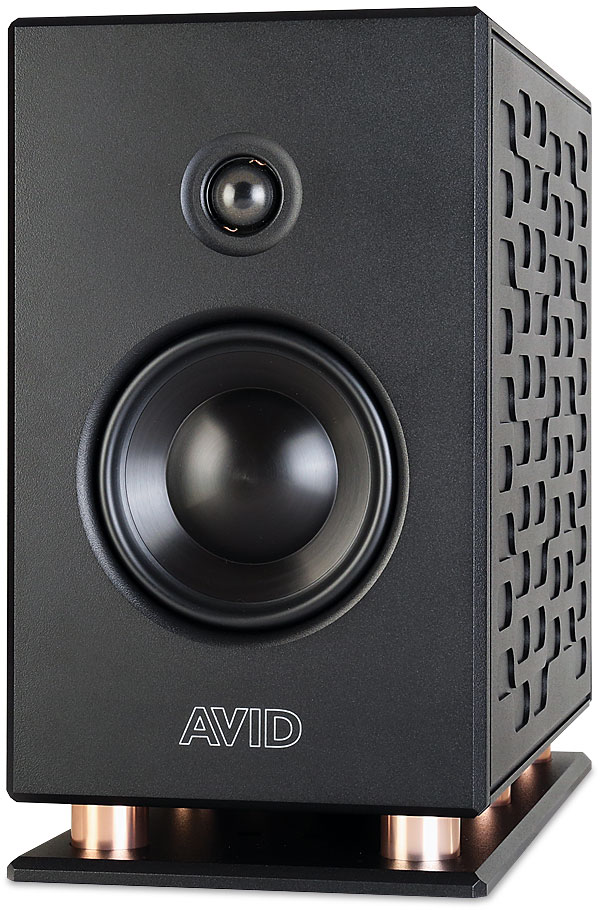AVID Reference Four Loudspeaker

 AVID's 'sledgehammer-to-crack-a-nut' two-way features a massive all-alloy cabinet with tuned mass dampers to kill unwanted resonances – and this is the smallest in its range!
AVID's 'sledgehammer-to-crack-a-nut' two-way features a massive all-alloy cabinet with tuned mass dampers to kill unwanted resonances – and this is the smallest in its range!
The friend who helped me unload these three AVID Hi-Fi boxes – one for each Reference Four speaker, at £20,000 a pair, plus one for the included (and very hefty) stands – thought he'd nailed it. 'What are these for, then?' he asked, 'heavy metal music?'. He wasn't far off the truth for while most speakers do very nicely indeed with variations on the wooden box theme, the Reference Fours use all-alloy cabinets, with panels up to 15mm-thick, sitting on six 'risers' attached to a thick alloy baseplate. Hence why each of these relatively compact speakers, at just under 37cm tall, weighs 25kg.
Furthermore, the cabinets may only be 21cm wide, which is almost as narrow as they could be while still accommodating the 16cm-wide bass/mid drivers, but they're also 44cm deep, meaning they'll overhang most aftermarket stands. AVID has this predicament covered with its own supports, although fitting them to the speakers is something of a palaver. After assembling the stands, you must remove the baseplate from the speakers, bolt that to the stand, and then fix the baseplate back to the six riser feet again.
He Ain't Heavy
This assembly stands just under a metre tall and totals 40kg per side, but with the centre of gravity up high, it doesn't feel quite as topple-proof as it might. I'm loathe to suggest the stands should be heavier still, but perhaps they could have done with an even weightier footplate?
With their big ticket, it may come as a surprise to learn that the Fours are actually the entry-level model in AVID's Reference range. This British company is best-known for its vinyl replay products [HFN Sep '20, Nov '20 and Apr '21], which allows the brand to offer a complete system from LP to amplification [HFN Dec '21] to speakers. Above the Reference Four sits the larger £55k Reference Three standmount (and stands) before we move on to the £135k Reference Two floorstanders and the £22k Reference Active Sub. The Reference One flagship, standing almost two metres tall and weighing 340kg apiece, costs £200k. Now that is heavy metal!
Relegating Resonance
As with all the range, the Reference Four's enclosure is machined and constructed in-house at the company's Cambridgeshire base, using aerospace-grade aluminium plates and with all fixings concealed. Resonance control is a feature of the alloy construction, and so AVID side-steps the stuffing and bracing we might see in a conventional wooden cabinet.

The thick aluminium alloy assembly offers an innate rigidity while the drivers are fixed in place with O-ring seals and compression plates, designed to spread the clamping force around the entire circumference of the driver's basket. Not for AVID a handful of bolts… Furthermore, tuned mass dampers are mounted via decoupling assemblies to the rear of the drivers, soaking up unwanted vibration before it leaves the unit itself, thus removing the need for further cabinet treatment.
That thinking also informs the design of the bass-tuning port that vents downward into the space created by those riser feet and onto a cone-shaped diffuser mounted on the baseplate. This distributes the port output over a full 360o, AVID claiming a superior 30Hz bass extension and reduced sensitivity to room placement versus a conventional rear-mounted port.
The drivers themselves are sourced from Morel, the 28mm silk-dome tweeter shared across the Reference range and featuring a dome treated with 'Acuflex'. As the name suggests, this is claimed to promote 'accurate flexing', where break-up modes are counteracted by others working in the opposite direction. The tweeter is powered by a neodymium magnet and 28.6mm 'Hexatech' (honeycomb) aluminium voice coil on a titanium former. Furthermore, the coil winding height is shorter than the magnetic gap so it remains within the magnetic field at all times, improving transient response. Finally, the tweeter is mounted behind a short flare on the alloy baffle to improve its off-axis behaviour.
Audiophile Components
The partnering 16cm bass/mid driver uses a damped polymer composite cone mounted in a 'Uniflow' basket, this designed using aerodynamic principles to smooth the airflow behind. Meanwhile the crossover uses ClarityCap capacitors, as in all the Reference speakers, along with 'Copper Connect' technology for reduced signal path resistance. Similarly, the air-core inductors are wound with 1.25mm-thick enamelled copper wire, its low DC resistance promising better bass control.

















































